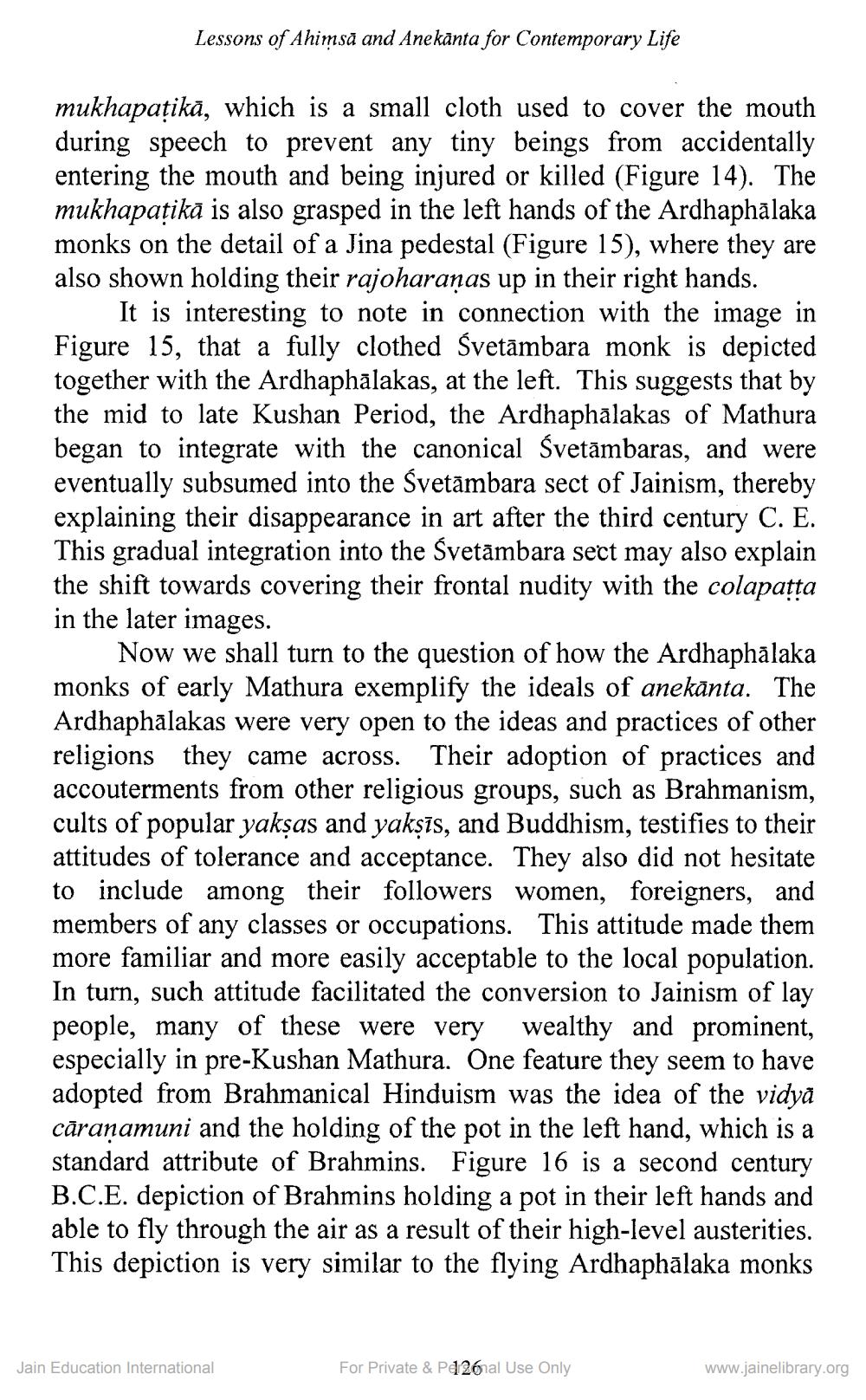________________
Lessons of Ahimsa and Anekanta for Contemporary Life
mukhapaṭikā, which is a small cloth used to cover the mouth during speech to prevent any tiny beings from accidentally entering the mouth and being injured or killed (Figure 14). The mukhapațika is also grasped in the left hands of the Ardhaphalaka monks on the detail of a Jina pedestal (Figure 15), where they are also shown holding their rajoharaṇas up in their right hands.
It is interesting to note in connection with the image in Figure 15, that a fully clothed Śvetambara monk is depicted together with the Ardhaphalakas, at the left. This suggests that by the mid to late Kushan Period, the Ardhaphālakas of Mathura began to integrate with the canonical Svetambaras, and were eventually subsumed into the Svetambara sect of Jainism, thereby explaining their disappearance in art after the third century C. E. This gradual integration into the Svetambara sect may also explain the shift towards covering their frontal nudity with the colapaṭṭa in the later images.
Now we shall turn to the question of how the Ardhaphalaka monks of early Mathura exemplify the ideals of anekanta. The Ardhaphalakas were very open to the ideas and practices of other religions they came across. Their adoption of practices and accouterments from other religious groups, such as Brahmanism, cults of popular yakṣas and yakṣis, and Buddhism, testifies to their attitudes of tolerance and acceptance. They also did not hesitate to include among their followers women, foreigners, and members of any classes or occupations. This attitude made them more familiar and more easily acceptable to the local population. In turn, such attitude facilitated the conversion to Jainism of lay people, many of these were very wealthy and prominent, especially in pre-Kushan Mathura. One feature they seem to have adopted from Brahmanical Hinduism was the idea of the vidya căraṇamuni and the holding of the pot in the left hand, which is a standard attribute of Brahmins. Figure 16 is a second century B.C.E. depiction of Brahmins holding a pot in their left hands and able to fly through the air as a result of their high-level austerities. This depiction is very similar to the flying Ardhaphālaka monks
Jain Education International
For Private & Pe26nal Use Only
www.jainelibrary.org




